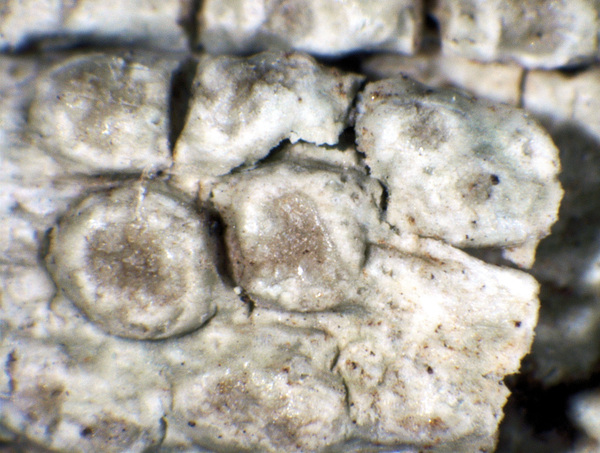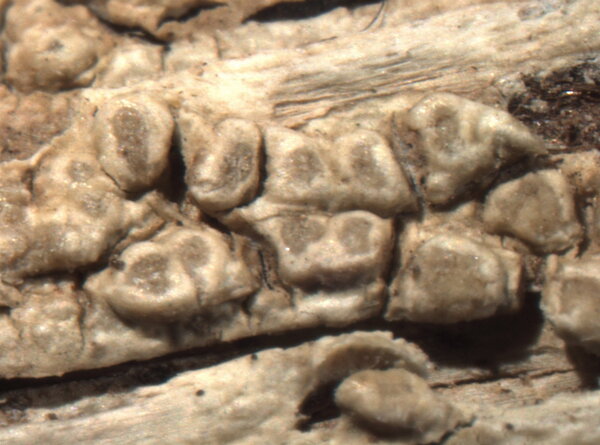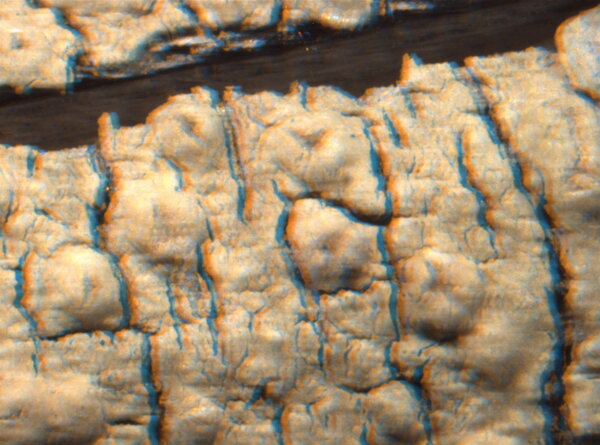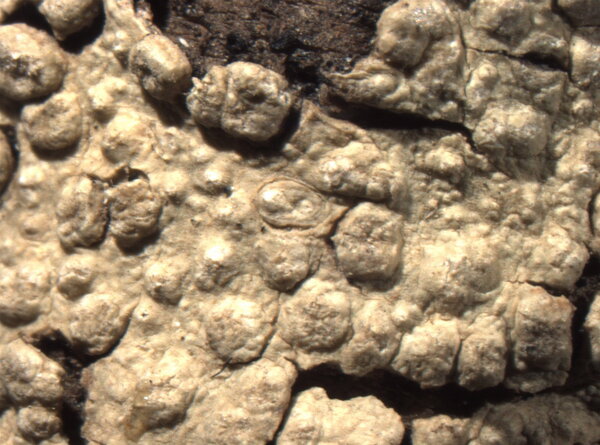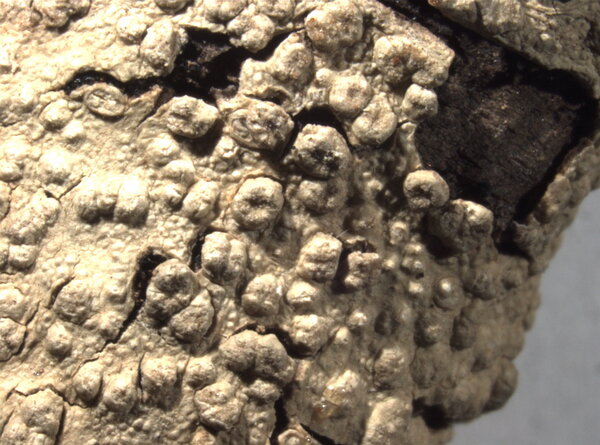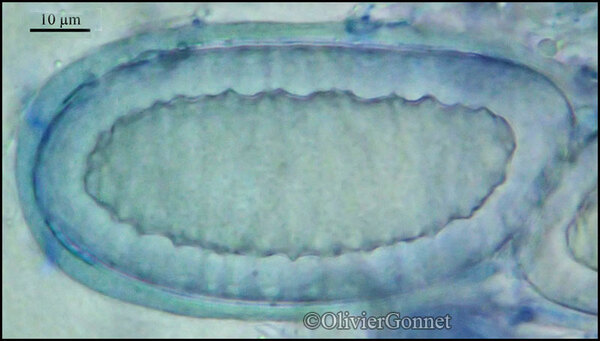Pertusaria heterochroa (Müll. Arg.) Erichsen
Rabenh. Krypt.-Flora, 9, 5, 1: 490, 1936. Basionym: Pertusaria pustulata var. heterochroa Müll. Arg. - Flora, 67: 285, 1884.
Synonyms: ? P. ficorum Zahlbr.; Pertusaria maximiliana Klem.; Pertusaria pustulata f. superpallens Nyl.
Distribution: N - Lig. C - Tosc (Putortì & Loppi 1999, Craighero 2010, Fačkovcová & al. 2024), Laz (Bartoli & al. 1997, Craighero 2010), Sar (Zedda 2002, Rizzi & al. 2011, Di Nuzzo & al. 2022). S - Camp (Nimis & Tretiach 2004, Pugl (Nimis & Tretiach 1999, Durini & Medagli 2002, 2004, Craighero 2010, Gianfreda & Matino 2020), Cal (Puntillo 1996, Incerti & Nimis 2006), Si (Nimis & al. 1994, Caniglia & Grillo 2006b).
Description: Thallus crustose, endosubstratic to thinly episubstratic, continuous to rimose, more or less verrucose, whitish, greyish green or yellowish green, sometimes delimited by a white prothallus. Apothecia lecanorine but appearing perithecioid, completely immersed in non-constricted, 1-2 mm wide thalline warts, (1-)2-4(-6) per wart, with a punctiform to slightly expanded, yellowish to pale brown disc. Epithecium colourless to very pale brown, K-, C-; hymenium colourless; paraphyses lax, branched and richly anastomosing; hypothecium colourless. Asci (1-)2-spored, broadly cylindrical, the apex with a broad ocular chamber, the outer sheath K/I+ blue, otherwise K/I-, with an inner extensible layer, Pertusaria-type. Ascospores 1-celled, hyaline, ellipsoid, (60-)80-140(-175) x (22-)28-45(-63) µm, double-walled, the wall to 10 µm thick, markedly transversally striated. Photobiont chlorococcoid. Spot tests: thallus K+ pale yellow, C-, KC+ yellow-orange, P-, UV+ orange. Chemistry: thiophaninic and stictic acids, plus sometimes traces of norstictic and constictic acids and 0-methylmonochlorlichexanthone.Note: a mainly Mediterranean-Atlantic species with optimum in coastal situations on smooth bark (e.g. on twigs of shrubs in garrigue vegetation); mostly Tyrrhenian in Italy. P. ficorum Zahlbr. is very closely related, and could prove to be the correct name for this species (Craighero 2010).
Growth form: Crustose
Substrata: bark
Photobiont: green algae other than Trentepohlia
Reproductive strategy: mainly sexual
Pioneer species
Commonnes-rarity: (info)
Alpine belt: absent
Subalpine belt: absent
Oromediterranean belt: absent
Montane belt: absent
Submediterranean belt: extremely rare
Padanian area: absent
Humid submediterranean belt: rather common
Humid mediterranean belt: common
Dry mediterranean belt: rather rare
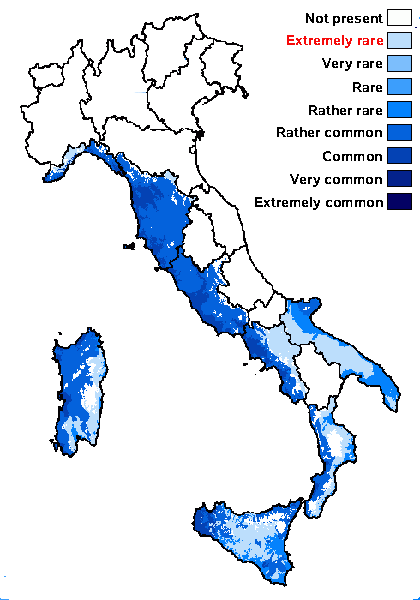
Predictive model
Herbarium samples
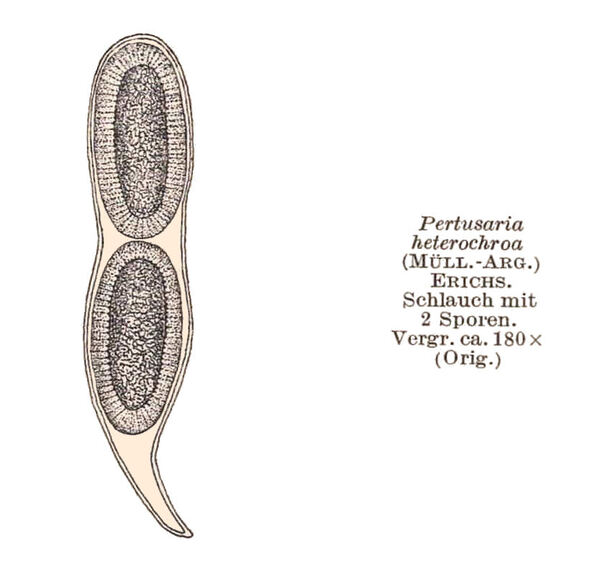
Erichsen C.F.E. 1936. Pertusariaceae. - In: Dr. L. Rabenhorsts Kryptogamenflora von Deutschland, Österreich und der Schweiz. Bd. IX, Abt. 5, T. 1. Akad. Verlagsges., Leipzig, pp. 321-512, 513-728. - Public Domain
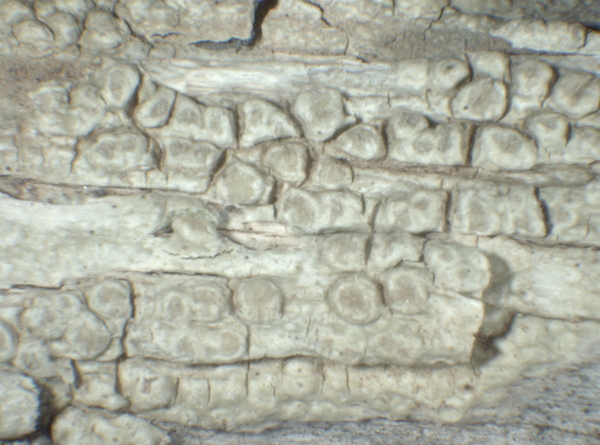

P.L.Nimis; Owner: Department of Life Sciences, University of Trieste
Herbarium: TSB (38305)
2008.02.25
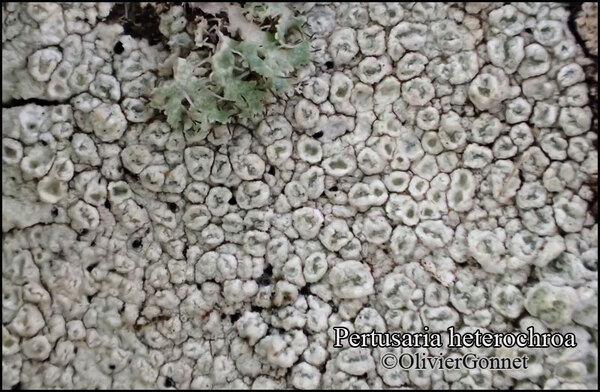
Courtesy Danièle et Olivier Gonnet - Source: https://www.afl-lichenologie.fr/Photos_AFL/Photos_AFL_P/Text_P_3/Pertusaria_heterochroa.htm
France, oct. 2015 - sur Quercus ilex - Corse
Growth form: Crustose
Substrata: bark
Photobiont: green algae other than Trentepohlia
Reproductive strategy: mainly sexual
Pioneer species
Commonnes-rarity: (info)
Alpine belt: absent
Subalpine belt: absent
Oromediterranean belt: absent
Montane belt: absent
Submediterranean belt: extremely rare
Padanian area: absent
Humid submediterranean belt: rather common
Humid mediterranean belt: common
Dry mediterranean belt: rather rare

Predictive model
| Herbarium samples |

Erichsen C.F.E. 1936. Pertusariaceae. - In: Dr. L. Rabenhorsts Kryptogamenflora von Deutschland, Österreich und der Schweiz. Bd. IX, Abt. 5, T. 1. Akad. Verlagsges., Leipzig, pp. 321-512, 513-728. - Public Domain


P.L.Nimis; Owner: Department of Life Sciences, University of Trieste
Herbarium: TSB (38305)
2008.02.25

 INDEX FUNGORUM
INDEX FUNGORUM
 GBIF
GBIF
